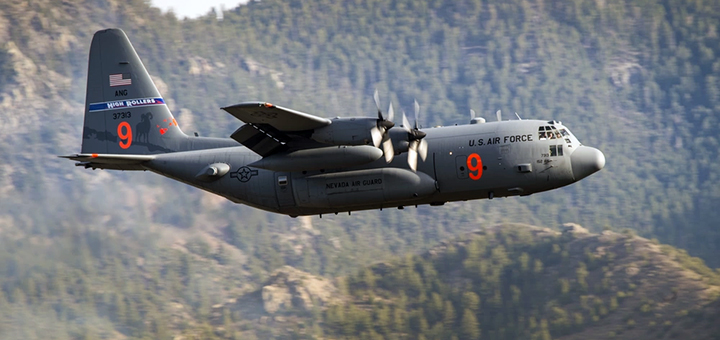Other News Releases
For Release: April 21, 2022 Contact: NIFC: Stanton Florea
208-387-5437 [email protected]
AFNORTH: Lt Col Karen Roganov
850-774-1044 [email protected]
Aerial wildland fire training taking place in Boise April 25-29
Boise, Idaho – The USDA Forest Service, Bureau of Land Management, other federal wildland fire agencies and CAL FIRE will conduct annual training for Modular Airborne Firefighting Systems (MAFFS) personnel in and around Boise, April 25-29. This national training will take place at Gowen Field in Boise.
The training will include eight military C-130 Hercules aircraft from the Air Force Reserve’s 302nd Airlift Wing, Peterson Air Force Base, Colo., the Wyoming Air National Guard’s 153rd Airlift Wing, the California Air National Guard’s 146th Airlift Wing and the Nevada Air National Guard’s 152nd Airlift Wing. The training includes classroom sessions, flying and ground operations for Air Force aircrews, civilian lead plane pilots and support personnel from the USDA Forest Service, Bureau of Land Management, other federal and state wildland fire agencies.
“The MAFFS program is an important supplement to our national airtanker capacity,” said Kim Christensen, deputy assistant director for operations for the USDA Forest Service. We conduct an annual training and certification exercise to ensure that MAFFS can be integrated into fire suppression operations in a safe, effective and seamless manner, in the event they are needed to assist in 2022.”
“Certification training prepares us so we are ready if the Department of Defense (DoD) is requested to activate to support wildfire suppression efforts this season,” said Lt. Gen Kirk Pierce, commander, U.S. Air Forces Northern (AFNORTH). “Last year, all eight of the Guard and Reserve aircraft activated to Federalized status under AFNORTH and U.S. Northern Command during our second-busiest fire season in 49 years spanning 96 days of U.S. Air Force support.”
First Air Force (Air Forces Northern), U.S. Northern Command’s Air Component Command, is the DoD’s operational lead for the aerial military efforts. The team stands committed to excellence through training and interagency relationships, said Pierce.
The C-130 Hercules aircraft that are part of the program are equipped with the USDA Forest Service’s MAFFS, which can drop up to 3,000 gallons of fire retardant in less than 10 seconds across a quarter-mile line. The system slides into the back of the military aircraft, and retardant is released through a nozzle on the rear left side. MAFFS aircraft can be activated to provide a critical “surge” capability to help slow or stop the spread of wildland fires. MAFFS aircraft are only activated when all commercial airtankers that are part of the national airtanker fleet are fully committed or not readily available.
As part of the training in Boise, practice water drops will be conducted on some remote portions of the Boise National Forest and Bureau of Land Management lands in southwestern Idaho. Residents and visitors in those areas may see low-flying C-130 aircraft and smaller lead planes throughout the week.
Note to news media: An opportunity to interview personnel and observe the training, including a practice water drop, will take place on Wednesday, April 27. If interested, please RSVP to Stanton Florea, NIFC External Affairs, at 208-387-5437.
For more information on the MAFFS program, visit: www.fs.usda.gov/managing-land/fire/planes/maffs
For background photos and videos of the program, visit: www.dvidshub.net/feature/MAFFSAEG









